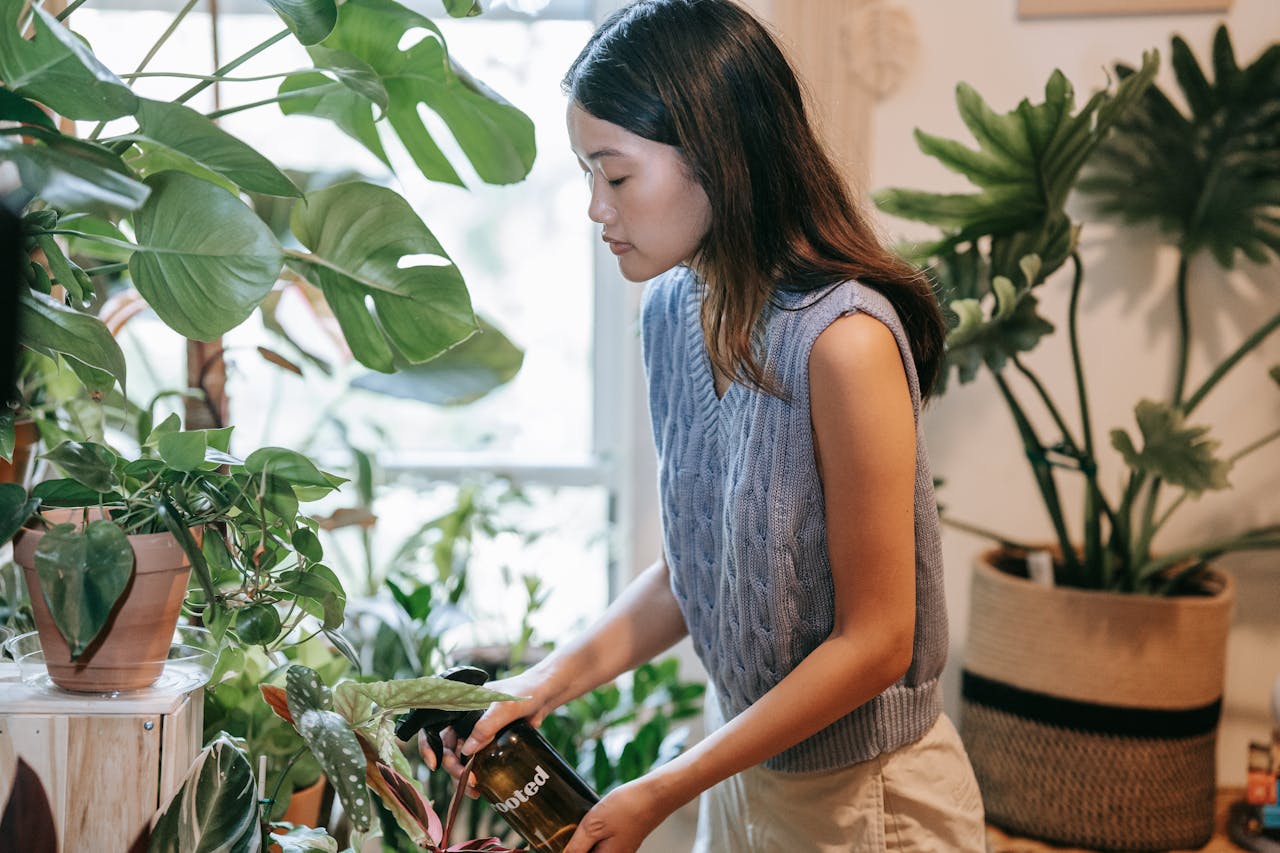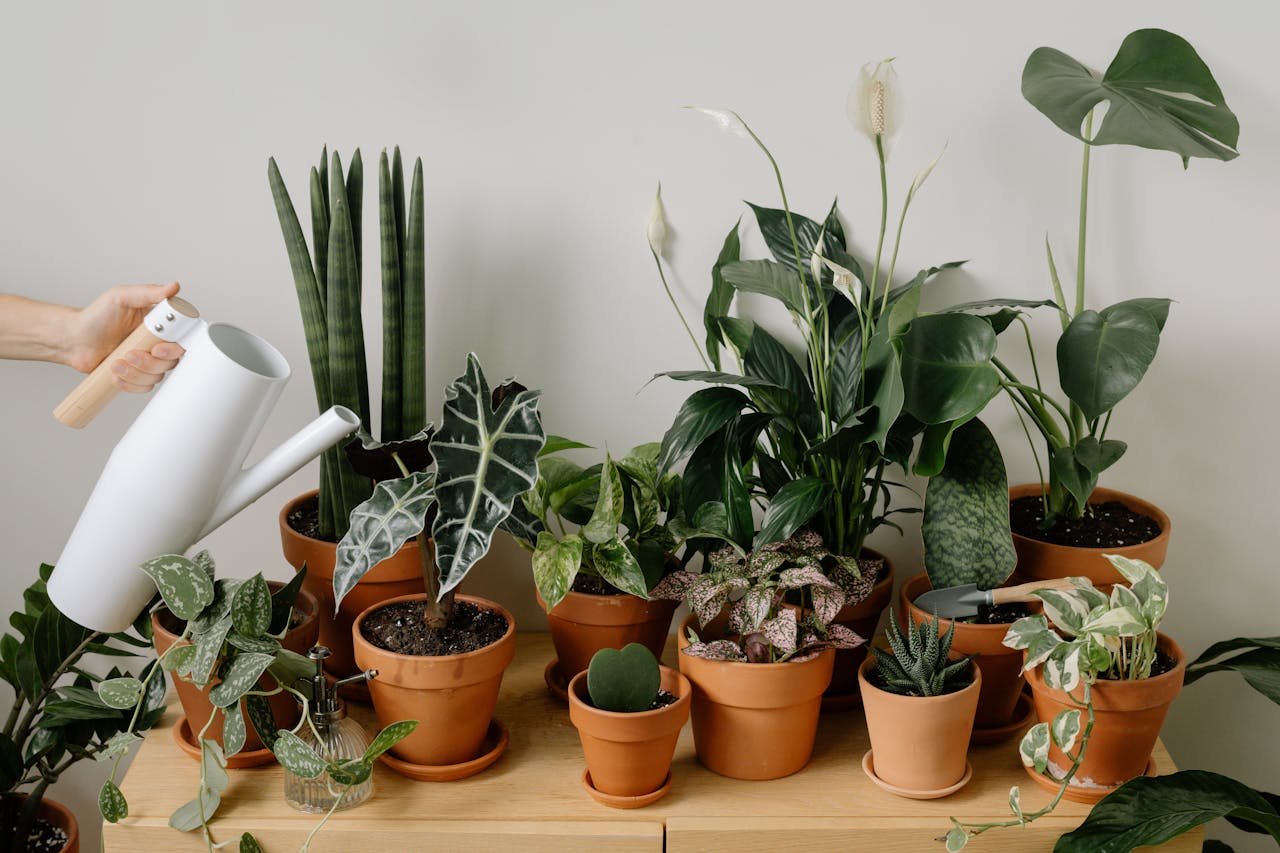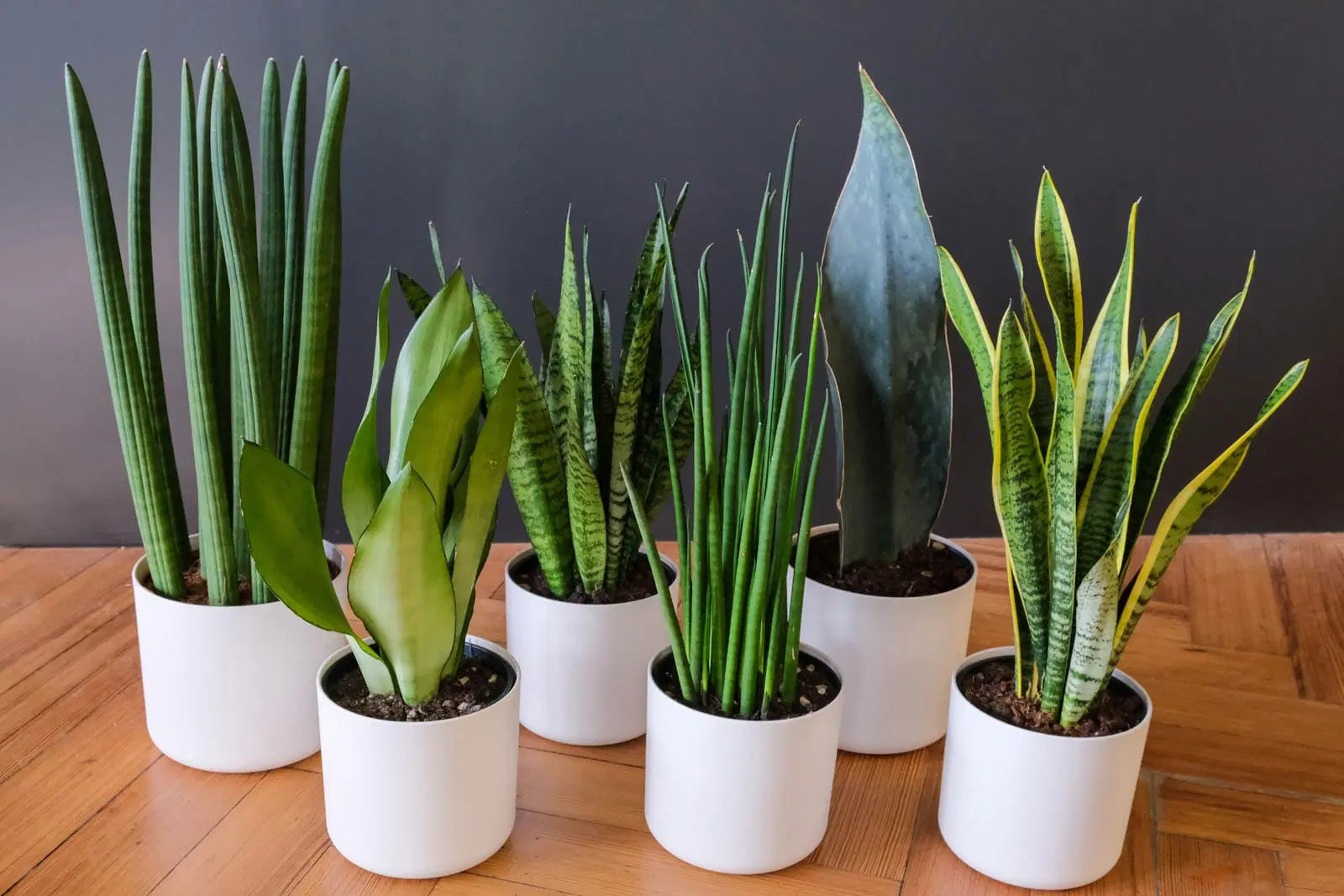Winter can be a challenging season for indoor plants. The colder temperatures, reduced sunlight, and dry indoor air can take a toll on your beloved greenery, making it essential to adjust your plant care routine to ensure they remain healthy and vibrant. Whether you’re a seasoned plant enthusiast or a beginner, these 6 cool tips to keep indoor plants fresh and green in winters will help you maintain a thriving indoor garden all year round.
1. Optimize Lighting Conditions

Maximize Natural Light
During winter months, daylight hours are shorter, and the intensity of sunlight decreases. To compensate, place your indoor plants near windows that receive the most sunlight. South-facing windows are ideal as they receive the maximum amount of light throughout the day.
Use Artificial Lighting
If natural light is insufficient, consider supplementing with artificial grow lights. LED grow lights are energy-efficient and can provide the necessary spectrum of light your plants need to photosynthesize effectively. Position the lights about 12-18 inches above your plants and keep them on for 12-16 hours a day to mimic natural daylight.
Rotate Your Plants
To ensure even growth, rotate your indoor plants every week. This prevents one side from receiving too much or too little light, promoting balanced and lush foliage.
Also Read- Common Indoor Plant Pests And How To Control Them Naturally
2. Maintain Proper Humidity Levels

Increase Humidity
Winter air tends to be dry, especially with heating systems running indoors. Many indoor plants thrive in higher humidity levels. To maintain adequate humidity:
- Use a Humidifier: Adding a humidifier to your home can help maintain consistent humidity levels, especially for plants that prefer moist environments.
- Pebble Trays: Place your plant pots on trays filled with water and pebbles. As the water evaporates, it increases the humidity around the plants.
- Grouping Plants: Cluster your plants together. This creates a microenvironment with higher humidity as the plants release moisture through transpiration.
Misting
Regularly misting your plants with water can also help increase humidity. Use a spray bottle to lightly mist the leaves, ensuring you don’t overdo it, as excessive moisture can lead to fungal issues.
3. Adjust Watering Practices

Reduce Watering Frequency
Indoor plants generally require less water during the winter months as their growth slows down. Overwatering can lead to root rot and other fungal diseases. Follow these guidelines:
- Check Soil Moisture: Before watering, insert your finger about an inch into the soil. If it feels dry, it’s time to water.
- Water Less Often: Decrease the frequency of watering by about 25%. For example, if you typically water once a week, reduce it to once every 10 days.
Use Room Temperature Water
Always use room temperature water to avoid shocking the plants. Cold water can cause root damage and inhibit nutrient uptake, while warm water can promote fungal growth.
Also Read- How To Use Indoor Plants To Create A Zen Space In Your Home
4. Provide Adequate Nutrition

Fertilize Sparingly
During winter, indoor plants do not require as much fertilizer as they do in the growing seasons. Excessive fertilization can lead to salt buildup in the soil, causing root burn and other nutrient-related issues.
- Choose the Right Fertilizer: Use a balanced, water-soluble fertilizer diluted to half the recommended strength.
- Frequency: Fertilize only once a month or even less frequently, depending on the plant’s specific needs.
Repot if Necessary
If your plant has outgrown its pot or the soil has compacted, consider repotting. Fresh soil provides essential nutrients and improves drainage, promoting healthier growth.
Also Read- 5 Easiest Indoor Plants To Maintain With Minimal Attention
5. Protect Plants from Drafts and Temperature Fluctuations


Avoid Cold Drafts
Cold drafts from windows, doors, or vents can stress your plants and cause their leaves to drop. Position your plants away from these areas to protect them from sudden temperature changes.
Maintain Consistent Temperatures
Most indoor plants prefer temperatures between 65-75°F (18-24°C) during the day and slightly cooler at night. Avoid placing plants near heat sources like radiators or fireplaces, as the intense heat can dry out the soil and damage the foliage.
Use Thermal Curtains
Insulating your windows with thermal curtains can help maintain a stable temperature around your plants, reducing the impact of cold drafts and helping to retain heat.
6. Prune and Clean Your Plants Regularly

Remove Dead or Yellowing Leaves
Pruning helps your plants focus their energy on new growth. Regularly inspect your plants and remove any dead, yellowing, or damaged leaves to maintain their overall health and appearance.
Clean Leaves
Dust and debris can accumulate on the leaves, hindering photosynthesis. Gently wipe the leaves with a damp cloth or give them a lukewarm shower to keep them clean and efficient.
Promote Air Circulation
Good air circulation prevents mold and mildew growth. Ensure that your indoor environment allows for some airflow around your plants without exposing them to cold drafts.
Conclusion
Winter doesn’t have to be a gloomy time for your indoor plants. By following these 6 cool tips to keep indoor plants fresh and green in winters, you can ensure that your greenery remains vibrant and healthy throughout the colder months. From optimizing lighting and maintaining humidity levels to adjusting watering practices and protecting your plants from drafts, these strategies will help your indoor garden thrive year-round. Embrace the beauty of indoor plants and enjoy a lush, green home even in the heart of winter.













Leave a comment
This site is protected by hCaptcha and the hCaptcha Privacy Policy and Terms of Service apply.